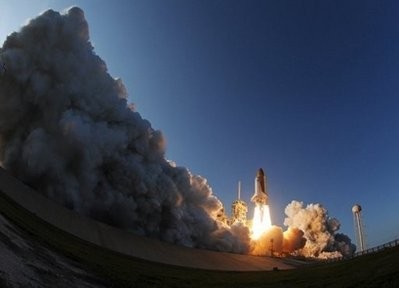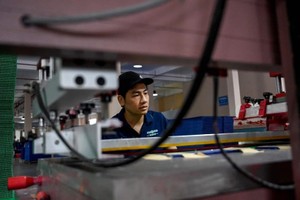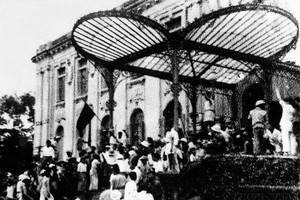CAPE CANAVERAL, Florida (AFP) – The shuttle Discovery blasted off on its final mission into orbit, marking the beginning of the end for what has been a central part of the US space program for three decades.
NASA's most journeyed shuttle launched at 4:53 pm (2153 GMT) on its way to the International Space Station (ISS), and when it returns next month, it will become the first of the three-member fleet to enter retirement.

"Good to be here," Discovery Commander Steve Lindsey said by radio once the shuttle reached orbit.
The shuttle is set to arrive at the ISS Saturday at 2:16 pm (1916 GMT), transporting a spare closet module and the first humanoid robot on an 11-day mission that includes two spacewalks.
"It has been a pretty tremendous day in space flight for us," said Bill Gerstenmaier, NASA associate administrator for space operations.
The US team received messages of encouragement from the Europeans after their Automated Transfer Vehicle-2 spacecraft "Johannes Kepler" docked at the ISS hours before shuttle liftoff, "which was a great way to start the day," he added.
However, the last few moments before launch were fraught with anxiety as NASA engineers raced to fix a glitch that temporarily paralyzed some ground computers. The problem was resolved and did not delay the mission further.
The launch was postponed in November after cracks emerged on Discovery's bright orange external fuel tank, causing engineers to puzzle for many weeks over the cause and how to fix it.
In January, they agreed that installing small metal strips, called radius blocks, on the 6.7-meter (22-foot) U-shaped aluminum brackets would reinforce their strength.
The end of the shuttle program will create a gaping hole in the US space program during a period of belt-tightening and budget freezes, and will leave Russia's space capsules as the sole transit option to the ISS.
"Bittersweet" was the word of the day at Kennedy Space Center as astronauts, engineers and space fans crowded in to get a glimpse of history by watching Discovery's crowning launch 27 years after it first flew into space.
"There is no doubt the space shuttle is an engineering marvel," said NASA chief technologist Bob Braun.
"But it is an older vehicle. It is 30 years old; it was designed probably a decade before that," he said.
"I think we all recognize we need to go to the next chapter. But any time you go to that next chapter, it is bittersweet."
The Discovery crew plans to deliver the Permanent Multipurpose Module, with extra storage space and an area for experiments, as well as some spare parts and the Express Logistic Carrier, an external platform for large equipment.
The shuttle will also bring the first humanoid robot to the ISS. The Robonaut 2, or R2, is a joint project of General Motors and NASA and will stay behind as a permanent resident of the space station when Discovery leaves.
When Discovery wraps up this tour, the oldest surviving shuttle will have flown more missions than any of its cohorts and toted 180 people into space, including the first female shuttle commander and the first African-American spacewalker.
The other two shuttles are scheduled for their final flights later this year: Endeavour on April 19 and Atlantis on June 28.
Discovery has broken new ground multiple times since it first launched in 1984. It transported the Hubble Space telescope, was the first to rendezvous with the Russian Mir Space Station, and delivered part of the Japanese Kibo lab to the ISS.
The shuttle was also the first to return to space after two major disasters: the Challenger explosion in 1986 and the Columbia disaster in 2003, when the shuttle broke up on its return toward Earth.
Discovery has circled the globe more than 5,600 times and logged 142 million miles (230 million kilometers) over its 352 days in space.
Rachel Wiedemann, a Boeing lead engineer charged with monitoring the shuttle's thermal protection shield, said the launch day was emotional.
"This is the vehicle I am closest to, that I have the most experience working with," said Wiedemann. "It's my baby."
























